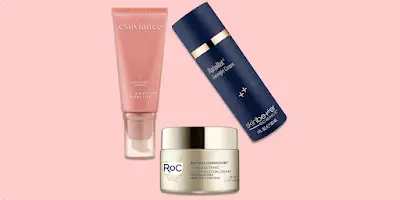
What is Azelaic Acid? And what are its benefits for skin care?
I know some of you may grumble at the thought of having to learn about yet another facial acid. But this particular acid is truly special. If your skin is prone to rashes or other issues like rosacea, then azelaic acid is the acid for you.
What is Azelaic Acid?
Extracted from grains like barley, wheat, and rye, azelaic acid is used in skin care as an effective chemical peel with antioxidant properties that can soothe the skin and reduce any factors that cause inflammation, rashes, irritation, or redness.
It is a lesser-known acid that is currently undergoing medical research into its effects on the skin, which also means you’ll be hard-pressed to find it in many skin care products, but in some ways, that makes it more interesting and some a holy grail.
Prescription products contain high levels of Azelaic Acid, where you can find up to 20% concentrate in these formulas, while over-the-counter products have significantly lower levels but are still considered very effective and are a great starting point for anyone looking to add AHAs into their daily skin care routine. As always, we recommend that you consult a dermatologist before using Azelaic Acid.
What Does Azelaic Acid Do for Skin?
As mentioned earlier, azelaic acid is less well known and can be difficult to find in over-the-counter products. It’s also notoriously difficult to incorporate into skincare serums and moisturizers. For brands that have found a winning blend, you’ll find that after using azelaic acid-rich products, you’ll experience a range of effects and reduced signs of common skin concerns, such as:
Frequent appearance of blemishes and imperfections
Pigmentation spots and uneven skin tone
Scarring and uneven skin texture
Dull and lackluster complexion
Increased sensitivity and redness
Azelaic acid can benefit the skin by maintaining the function of skin cells and keeping the top layer of the skin at its healthiest and smoothest appearance. Although azelaic acid is sometimes mistakenly considered a member of the broader AHA and BHA family, it’s actually a standalone skincare ingredient that isn’t as effective as other well-known acids like salicylic or lactic acid. That doesn’t mean it’s not as effective, and can easily be incorporated into a routine that already has AHAs and BHAs to bring an extra layer of skin-healing benefits to your routine. By using a blend of these skincare ingredients, you can combat blemishes and uneven skin tone and minimize signs of aging.
For more information on alpha hydroxy acids and beta hydroxy acids, check out our comprehensive guide to AHAs and BHAs to better understand which acid is best for your skin type and concerns.
Can Azelaic Acid be Used Daily?
Yes, you can! Azelaic acid has been studied in most medical studies for prescription products. The ingredient has proven to be stable enough to be used every day, morning and night. Keep in mind that azelaic acid can be very drying to the skin and, in some cases, can cause it to peel. To prevent this from happening, slowly introduce the acid into your routine at first, using it only at night and following with a hydrating and nourishing oil or moisturizer. Once your skin has developed the necessary tolerance, you can use it daily. However, always make sure to use an SPF of 30 or higher every day to protect your skin from harmful UV rays and sun damage.
When Should You Use Azelaic Acid in Your Routine?
For active ingredients like azelaic acid, it is most beneficial to use products that stay on the skin longer. Face washes and cleansers are a very important part of any skin care routine, but they work less on the skin because they are rinsed off the skin. If you opt for a serum and moisturizer, the acid can remove dead skin cells and fade dark spots and signs of aging. After using a serum or moisturizer rich in azelaic acid, I recommend using a hydrating gel-like formula with a high concentration of hyaluronic acid to prevent dryness and restore skin balance.
What are the side effects of using azelaic acid?
The most common side effects when using azelaic acid are:
Burns
Stinging of the skin
Peeling of the skin in certain areas after use
Dryness
Redness
To combat these issues, you can follow some simple steps such as: For example, apply moisturizer and make sure to always use sunscreen during the day, even on cloudy days. Less common side effects may also occur if you find yourself suffering from any of the following: Stop using azelaic acid and consult your doctor for further advice.
Less Common Reactions
Blistering of the Skin
Irritation
Swelling
Hives and Itching
Difficulty Breathing
Tense and Joint Pain
Fever
When you first introduce azelaic acid into your routine, it is highly recommended that you perform a 24-hour patch test. If signs of a skin reaction occur, do not use the product on your skin and seek help from your doctor.
Well, at least now you can cross azelaic acid off your list of “effective skin ingredients I need to know about.” While it’s still shrouded in some mystery as it’s not as well-researched as other facial acids, it’s gaining popularity among skincare gurus and other experts. With her ability to treat stubborn skin issues like blemishes and rosacea, who knows how many skin-rejuvenating secrets she has!


